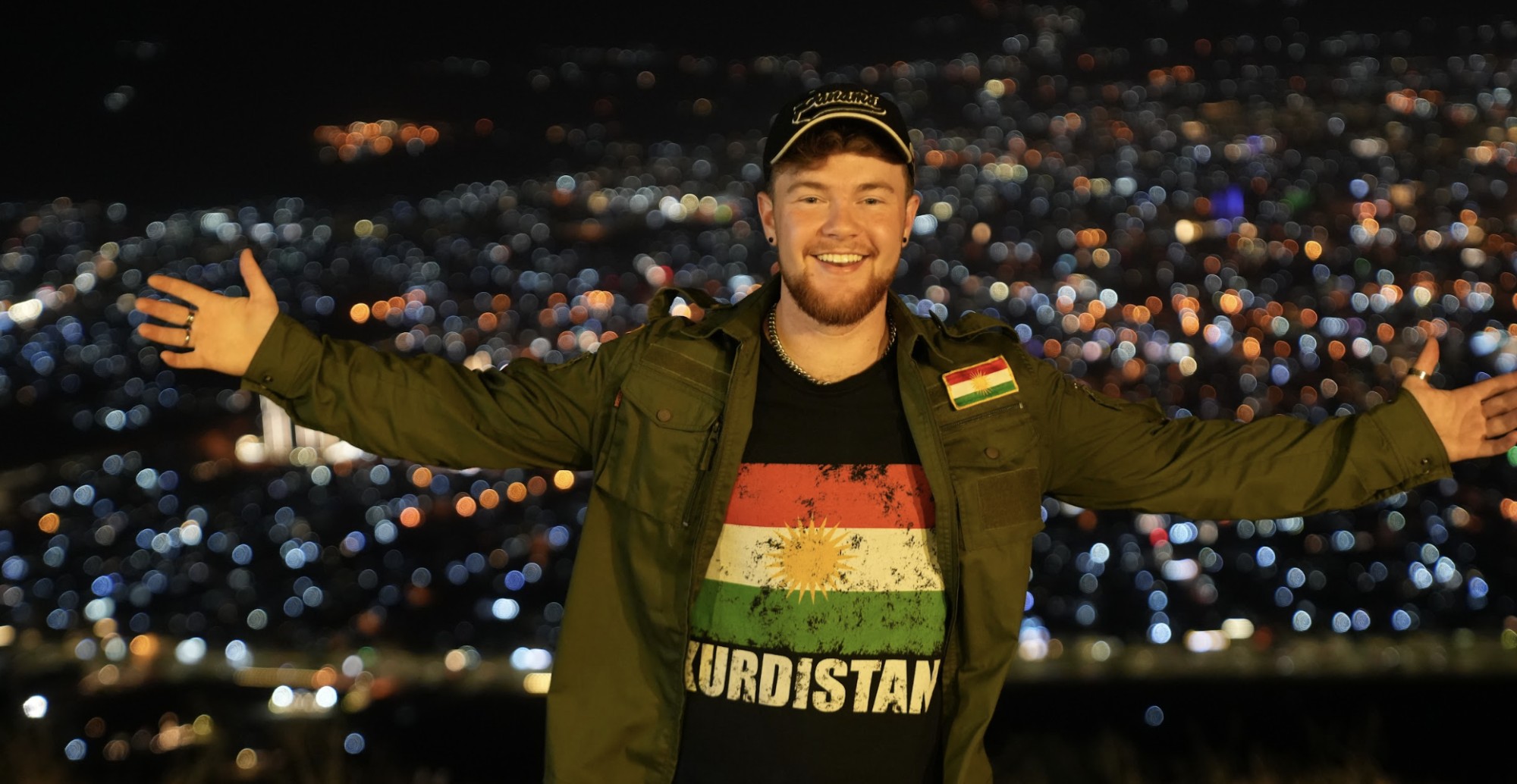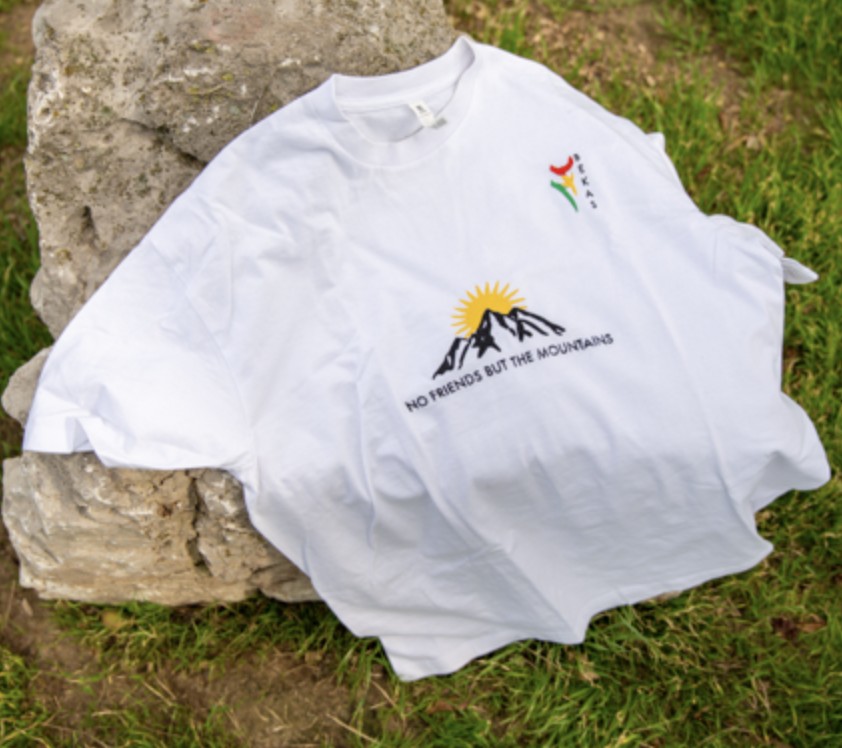As the hot, red-orange molten bronze flows into the mold, Shwan Kamal exhales a sigh of relief. He is now one step closer to completing the sculpture he is working on, adding it to the long list of projects he has undertaken since beginning his artistic journey 43 years ago.
Kamal is a world-renowned sculptor whose works blend realism, romanticism, and abstraction. His art has been exhibited internationally, in countries such as Germany and Sweden. But there was a time in his childhood when he had little interest in the arts.

Born in 1967 and raised in the Jewish neighborhood of Sulaymaniyah, Kamal had no clear sense of what his future held. Occasionally, he would retrace the pictures of animals he saw in his textbooks. His father proudly shared his sketches with family and friends, encouragement that gradually drew Kamal toward the arts.

Talent and academic excellence
After graduating high school in 1982, Kamal enrolled at the Sulaymaniyah Institute of Fine Arts, where his passion for the arts flourished. He has been painting consistently ever since.
“A lot of people ask me how I started sculpting and how I got into it. To be honest, it was a coincidence. My interest in sculpting was sparked by a teacher who created a clay sculpture of Kawa the Blacksmith in the institute’s courtyard,” Kamal told Kurdistan Chronicle during an interview.

He spent five years in the sculpting department at the institute and graduated as the top student in all of Kurdistan. Thanks to his talent and academic excellence, Kamal was later accepted into the prestigious Baghdad Academy of Fine Arts, another pivotal step in his development as an artist.
“I learned so much from some of the Arab world’s most renowned artists, such as Muhammed Ghani Nimat, Ismael Fattah Turk, Salih Qaraboli, and Fayaq Hassan,” Kamal said, reflecting on his time in Baghdad.

Return to Kurdistan
He remained at the academy until his graduation in 1991. Though he was offered a rare opportunity by Iraq’s Ministry of Higher Education to further pursue his studies and teach at the Baghdad Academy, Kamal turned it down, eager to return to Kurdistan and serve his people.
His return, however, coincided with a major political upheaval – the Kurdish uprising of 1991, when the people of Kurdistan revolted against the Ba’ath regime. This event led to the creation of a no-fly zone and secured de facto autonomy for the Kurds.

Despite the turmoil, Kamal remained committed to his goals. He began teaching sculpting at the Sulaymaniyah Institute of Fine Arts, a position he held until 1994, when civil war forced him to flee to Europe.
Before emigrating, Kamal completed several significant projects, including the first sculpture commemorating the victims of the 1988 chemical weapons attack on Halabja. The work honored Tofiq Karaba, an electrician who risked his life to maintain the city’s power grid during the Iran–Iraq War. Interestingly, when radical Islamist groups took control of Halabja in the 1990s and destroyed nearly all the city’s statues, they left Kamal’s statue of Tofiq Karaba untouched.

Purposeful, historical restoration
Kamal arrived in Germany in 1995, unfamiliar with the language or culture. He began as a mold breaker in a German factory. A few years later, he created his first sculpture there, taking the first step toward establishing himself in the diaspora.
He has since dedicated much of his life to perfecting his craft, from spending a year in Athens learning how to work with marble, to mastering various sculpting techniques in Germany. Kamal earned a vocational certificate in sculpture and has studied human and equine anatomy to add depth to his work. As he puts it, “A sculptor must be educated.”

For any artist, creating a masterpiece is one thing; having it displayed in the right place at the right time is another. That’s why it’s especially rewarding when a commission aligns with the artist’s personal values.
For Kamal, such opportunities have come from the German government, which enlisted him to assist with numerous historical restoration projects. Two notable examples include the restoration of a sculpture by a Jewish artist that was melted down by the Nazis under the pretense of recycling materials for the war effort, and another sculpture destroyed during Allied bombings.

Speaking to Kamal, it becomes clear that as a member of a historically persecuted nation, he feels a deep sense of purpose in restoring monuments to other oppressed peoples.
In April 2025, Kamal returned to Kurdistan for three days, during which the Kurdistan Regional Government approached him about several public art projects. Soon, his sculptures will grace major cities across Kurdistan, telling the stories of people often overlooked by history.
In fact, his work is already visible in parts of Kurdistan. One of his most iconic pieces is the Lady Justice sculpture outside the central court in Erbil. Another is a monument to the great Kurdish poet Sherko Bekas in Sulaymaniyah’s Azadi Park. Bekas (1940-2013) is known as one of the most influential figures in modern Kurdish literature.

Doing what he loves
Kamal’s work mainly falls into three cate5gories: art created for exhibitions, 13 historical restoration projects across Germany and Sweden, and commissions completed during his time working in various European factories.
Naturally, Kamal feels a stronger attachment to some pieces than others. For instance, he holds dear the sculpture of Ritte Arnold Ross and his squire; to finish the project, he spent a year studying horse anatomy. Other highlights include the Fountain of Justice in Berlin’s Platz der Republik; Hilfe fur die Armen (Help for the Poor), a monument to German composer Gustav Adolf Uthmann, and a sculpture of Felix Mendelssohn Bartholdy.

Kamal has collaborated with many prominent sculptors from around the world, including the acclaimed Anglo-German artist Tony Cragg. He has also worked on enlarging sculptures by German contemporary artist Thomas Schutte.
While he takes pride in what he has accomplished, Kamal’s ultimate aspiration is to reach the level of his artistic idol: the French master Auguste Rodin. When asked whether he could imagine doing anything other than sculpting, Kamal replied, “I don’t think I can do anything besides sculpting. I am lucky to do what I love as a career.”
Zanyar Jaf is a journalist based in Erbil, the Kurdistan Region.

